SMN - SS Prinses Juliana 1910 to 1030, renamed SS Costa Rica 1930 to 1941 for KNSM
Please Note: Firefox & Google Chrome may not suitable
Use Internet Explorer / Google for this page to load perfectly!
Maritime Historian, Cruise‘n’Ship Reviewer & Author
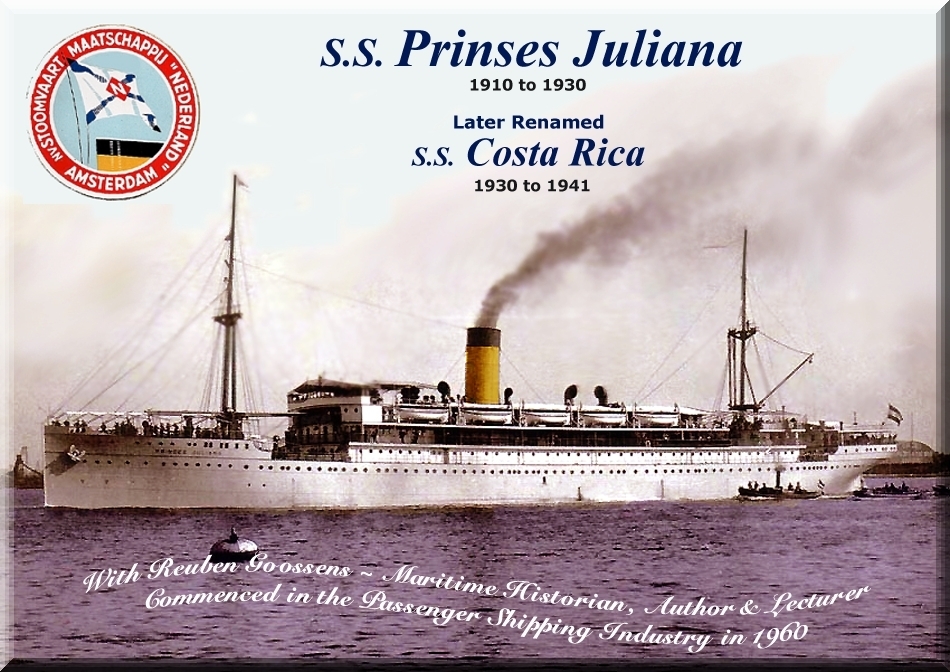
Nederland Line’s SS Prinses Juliana of
1910 was placed in service on the
However, in 1930 she was renamed SS Costa Rica
and operated via the
Please Note: Below is her comprehensive history as well as countless photographs of this fine Dutch liner. In addition, you will find one of the most extensive specifications and other details sections that contain a host of information, which is not often found with other ships.
Construction and her Launch:
The “N.V. Nederlandsche
Scheepsbouw-Maatschappij” (NSM) in
However, on April 30, 1909 HRH Queen
Wilhelmina’s very first child was named; “Juliana Louise
Emma Marie Wilhelmina” and she was born at
Construction was taking place at “N.V.
Nederlandsche Scheepsbouw-Maatschappij,” in Yard 105 at
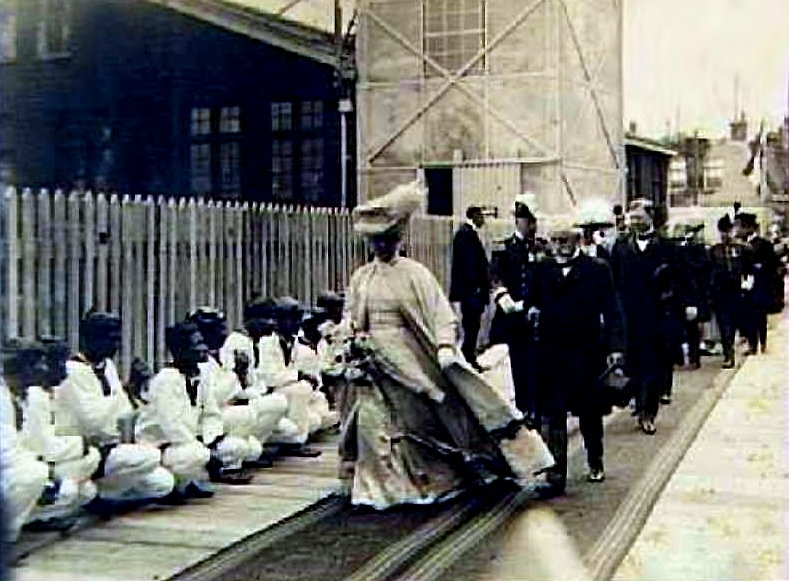
HRH Queen
Wilhelmina & NSM Executive Director Mr. Goedkoop
is seen walking toward the launch platform
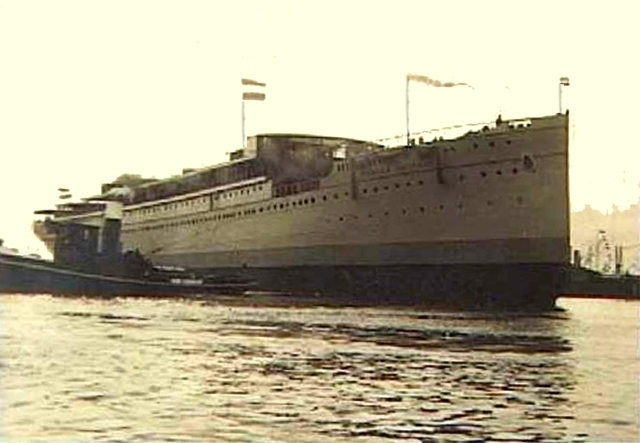
The just named and launched Prinses Juliana is seen in the water and is now undertow bound to her fit-out berth
At the “Nederlandsche Scheepsbouw-Maatschappij” fit-out facility the Prinses Juliana had her superstructure completed, as well as her funnel and two main masts fitted and her interiors completed. She would then enter the Drydock where she would be completed; having her hull painted grey whilst her boot topping was red, and her superstructure was painted a crisp white. Her funnel was a buff (dull yellow) with a black top (hat).
For her time she was a well-balanced looking ship, with her two tall, slightly slanting masts, one forward, and one aft, combined with an equally slanting single tall funnel. With her low-slung superstructure she looked quite attractive, as hew slender hull was completed with her sharp straight bow, and that simply beautiful counter stern, making her an overall perfect package for her days! In relation to cargo, she had two holds forward of her superstructure and two holds aft of the ship, giving her an extensive cargo space.
Upon completion around September 20, 1910, she headed off for her deep-sea trials, which was successful for she attained a maximum speed of 15.5 knots with very little vibrations considering. However, her service speed would be generally 14 to 14.5 knots.
Upon completion of her trials the Prinses Juliana headed for
Maiden Voyage and early service:
SS Prinses
Juliana departed
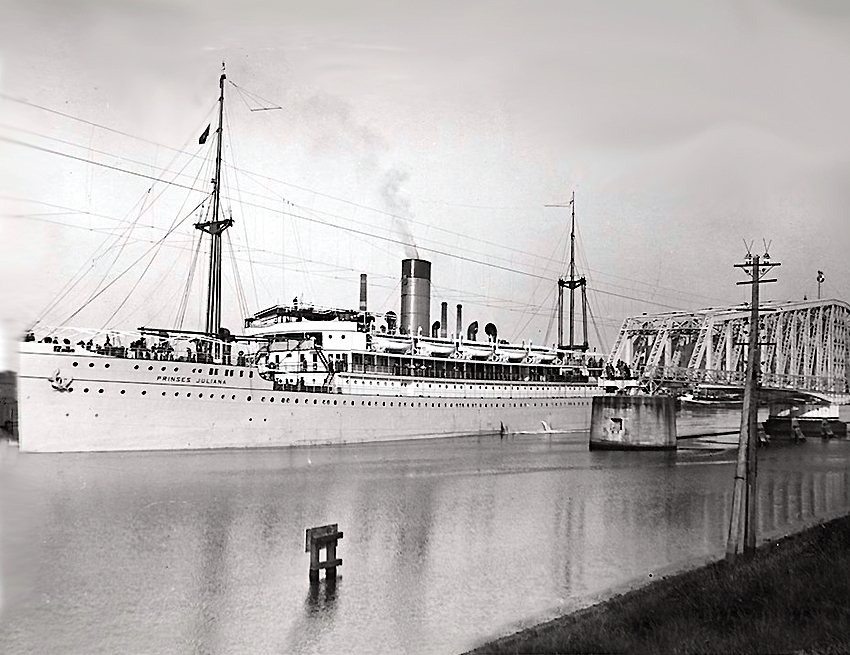
SS Prinses Juliana
is seen here on her maiden voyage
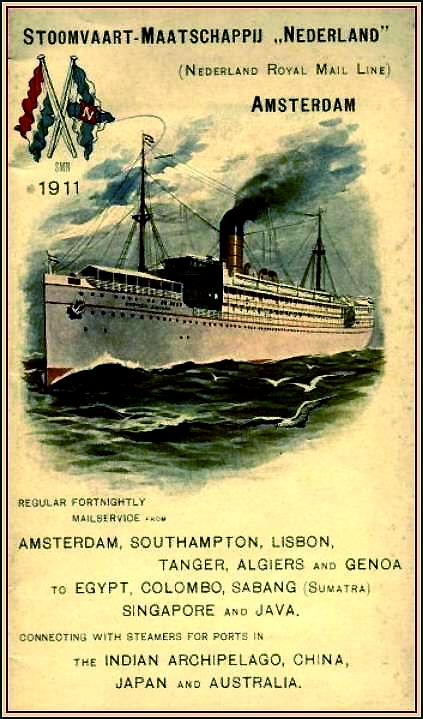
NSM Poster from 1911
Then from
April 4, 1917 to March 1918 her schedule changes, as the SS Prinses Juliana
became part of the fleet that sailed on the then regular Java Pacific Mail
Services, that visiting such far away places as San Francisco, Honolulu,
Yokohama, Nagasaki, Hong Kong and Singapore to Batavia, and vice versa. It also
called on Sabang on the north coast of
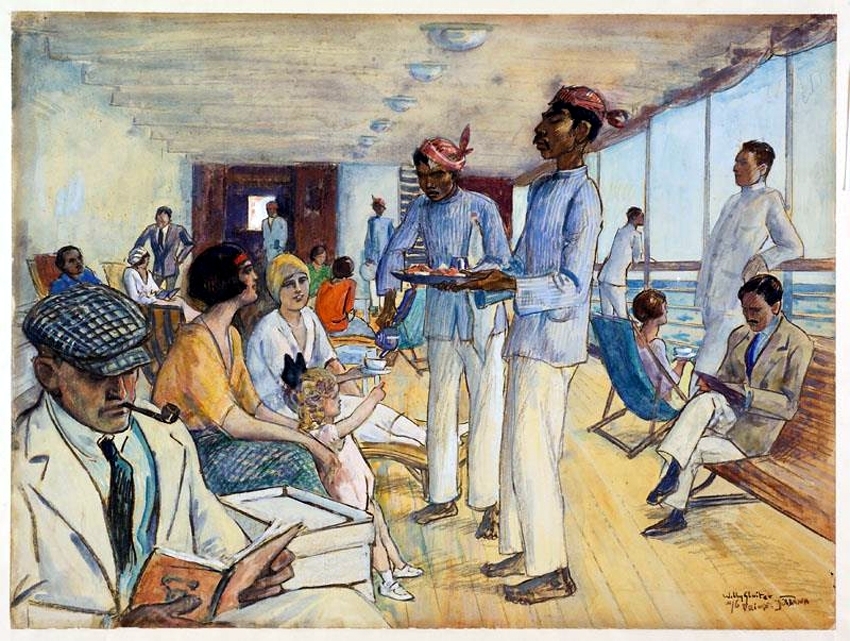
A NSM postcard
with an illustration of an afternoon tea being served on Promenade deck, with Javanese
stewards
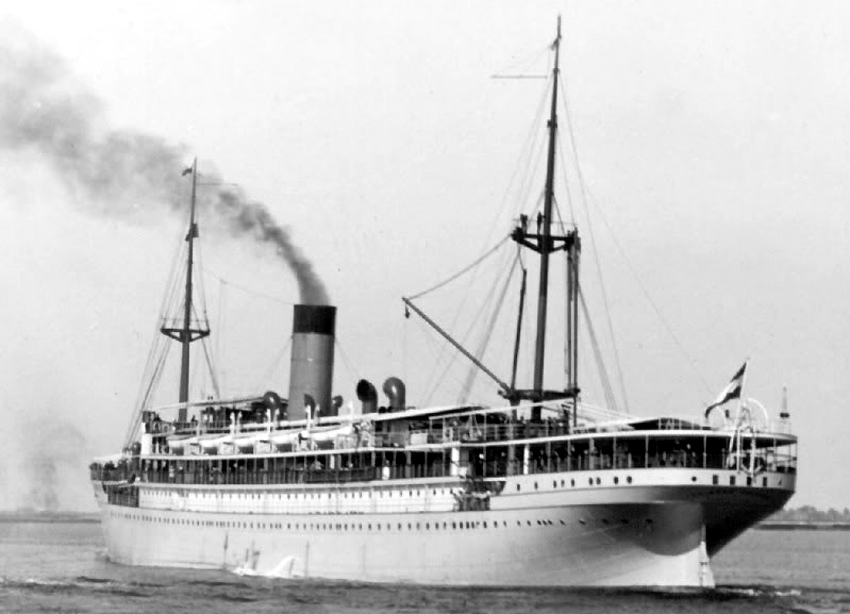
A superb stern view of this fine ship!
But, then on
March 23, 1918 whilst the Prinses Juliana was in
Prinses Juliana the Trooper:
The newly
converted Prinses Juliana now being a troop ship for the Cruiser &
Transport Service, departed from
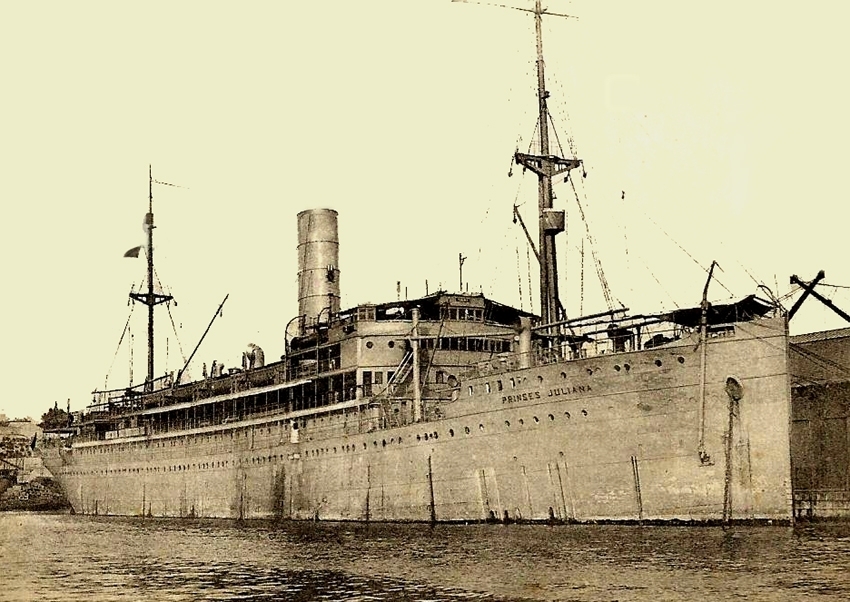
Here we see a very dull looking troop ship Prinses Juliana berthed
Her final
voyage under the British flag concluded on August 19, 1919 in
Returned to her Previous Liner Service:
Having had her
interiors restored to their previous glory as well as external repainting, the
SS Prinses Juliana soon departed
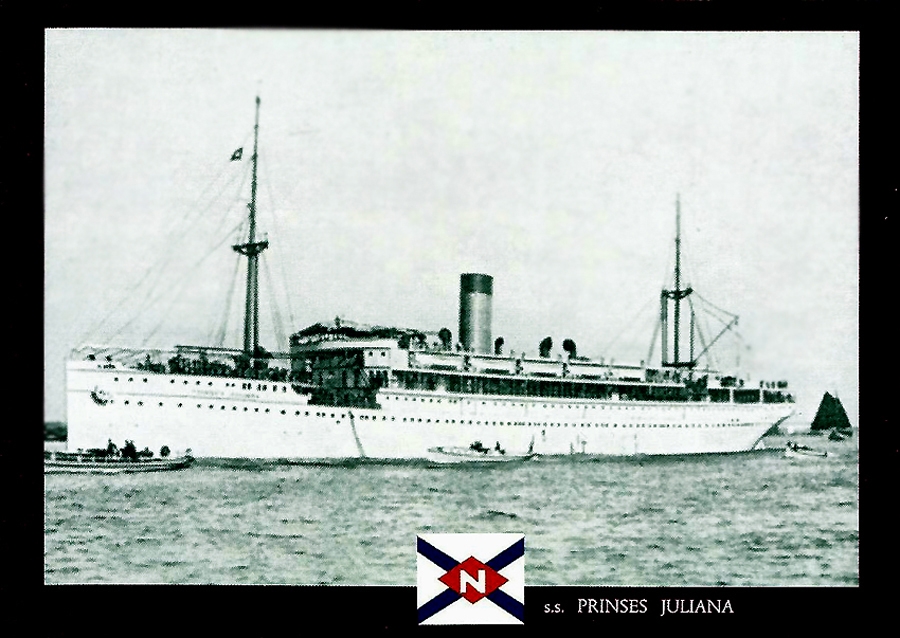
A new postcard of
the updated SS Prinses Juliana
Change of Ownership and Name:
It was suddenly announced that on May 15, 1930
the Prinses Juliana had been sold to the “Koninklijke Nederlandsche
Stoomboot-Maatschappij N.V.,” (KNSM) of
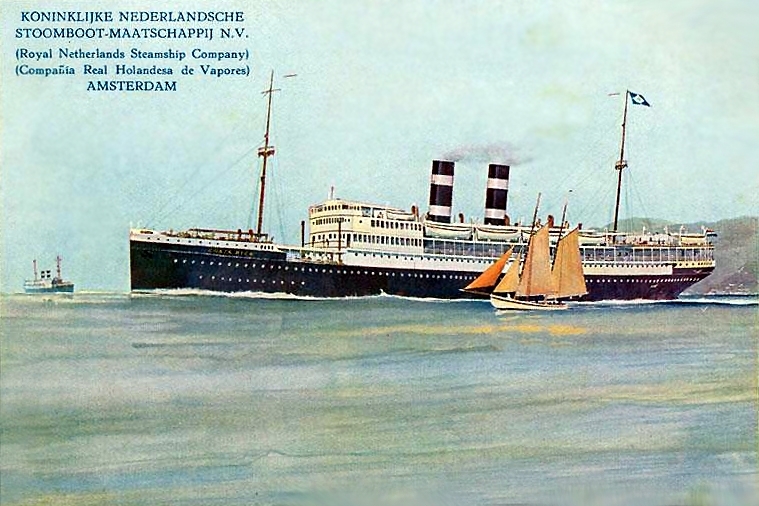
Her we see a pre-release postcard with an illustration of how the new updated liner SS Costa Rica would look like
This included adding an aft dummy funnel,
making her a better-looking ship as well as a new casing for her forward
funnel, giving her thicker and thus making her a better-proportioned looking
ship. Her new funnel livery was black with two white narrow bands, and her hull
was also painted black, with red boot topping and she was renamed the “
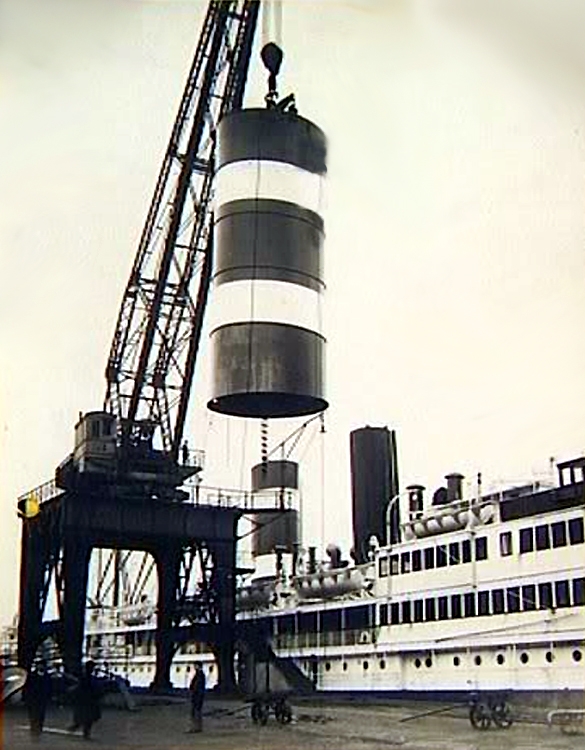
Her we see that the new aft dummy funnel had been fitted, but a new casing was now being placed over the forward funnel
We can also see the new glazed forward sections of Boat and Promenade Decks, providing better passenger spaces
In September of 1930 the SS Costa Rica headed
out for her sea trials and she arrived back very much a new looking liner in
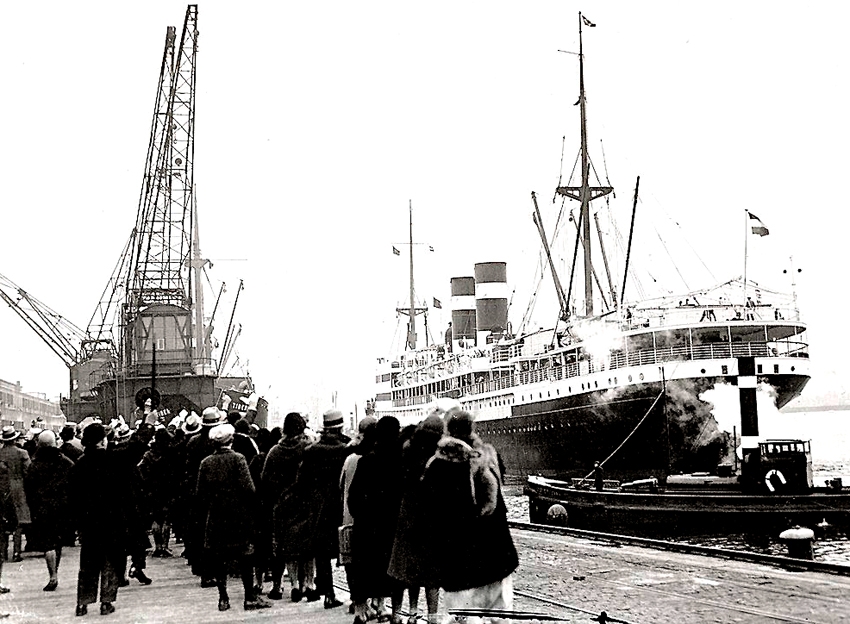
The
The spotless almost new looking SS Costa Rica
finally departed
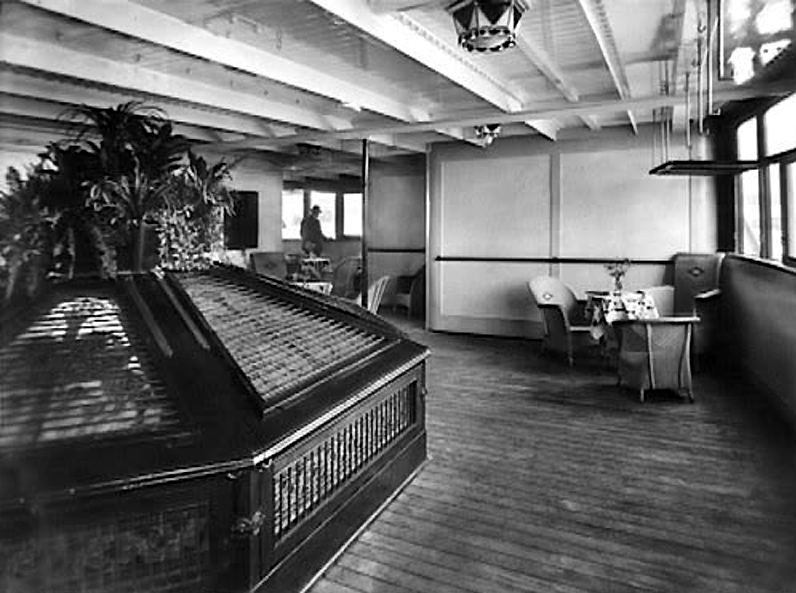
With the new enclosed Promenade Deck on both sides a Palm Garden Verandah had been created
This venue was
perfect for relaxing, a hot morning bouillon, and afternoon tea
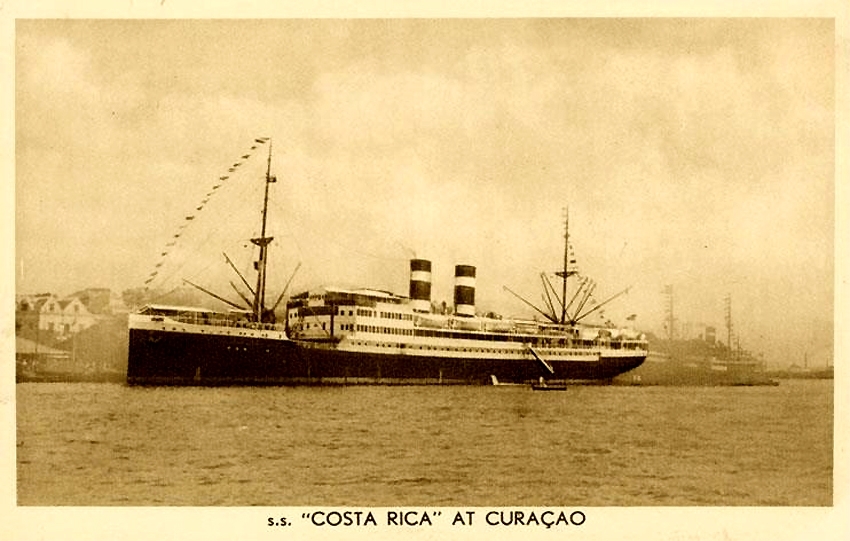
Regardless her popularity, sadly due to the situation at hand with the looming world war, it was decided by KNSM that as from September 1939 all of Costa Rica’s passenger accommodations would be closed and she would now only be used as a cargo ship being operated by a much smaller crew. She would operate as a rather luxury cargo ship for just a year, as fate would soon change everything!
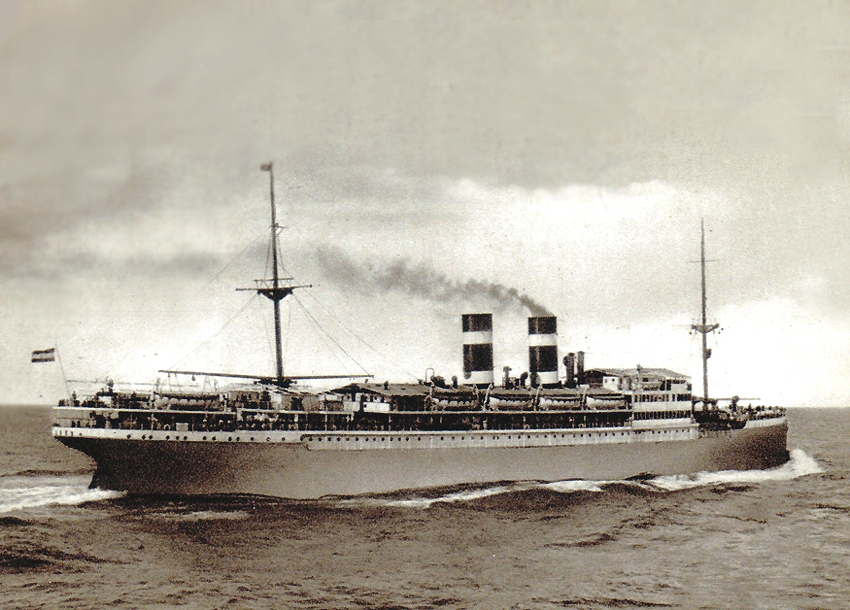
Towards the end of her days with KNSM the SS Costa Rica seemed to have a grey hull, as this photograph shows
World War Two:
Everything was about to change again, for she
had been commissioned by the British, just as she had for
World War One, to operate as a troop ship. Thus the Costa Rica headed
for and remained in Liverpool, Great Britain from September 22 to December 15,
1940 were she was being extensively converted into troop ship, as well as being
given additional heavy load handling devices. She then headed off from the
That Tragic Day in 1941:
It was late in April 1941 when troopship HMTS
Costa Rica would evacuate British troops from Kalamata
in
But tragically, as fate would have it, no
sooner had she left port on April 27, full of British fighting men and heading
for a safe port, the Costa Rica suddenly came under direct air attack and she
was bombed by German aircraft, which so badly damaged the ship that she was
completely destroyed and could not be saved and very quickly she sunk in
position 35-54 N & 23-49 E. However, thankfully all allied troops from the
General Specifications & Construction Data:
Ship’s Name: SS Prinses Juliana.
Built by: “N.V. Nederlandsche
Scheepsbouw-Maatschappij,”
Yard Number: 105.
Date laid down: July 7, 1909.
Launch Date: June 1, 1910.
Delivery Date: October 1, 1910.
Classification Register: Lloyd's Register of Shipping (LR).
Category: Passenger vessel.
Propulsion: Steamship.
Type: Passenger ship.
Masts: Two masts.
Funnels: One.
Material hull: Steel.
Passenger decks: 3.
Engines: Steam, Quadruple Expansion by Nederlandsche Fabriek van “Werktuigen
& Spoorwegmaterieel N.V,”
Number of Cylinders: 4.
Power: 6500 BHP.
Power Unit: IHP.
Engine additional info: Two 4-cylender Steam Engines.
Service speed: 14.5 knots.
Screws: 2.
Tonnage: 8,069 GRT, 4,952 Net Tonnage. 7,080 Deadweight.
Cargo: 234,000 Cubic Feet.
Length: 455.3ft. Beam: 55.2ft. Draught: 34.2ft.
Passengers: First 101 - Second 74 - Third 34 & Steerage Class 140 - Total of 349.
Ship History Data:
Date & Name: October 1, 1910 - SS Prinses Juliana.
Owner & Manager: N.V. Stoomvaart Maatschappij '
Homeport / Flag:
Call sign: PQNW.
Date: March 2, 1918. HMT Prinses Juliana - Troop Ship.
Manager: Peninsular & Oriental Steam Nav. Co. Ltd.,
Owner: The Shipping Controller,
Homeport / Flag:
Date: September 2, 1919 - SS Prinses Juliana.
Owner & Manager: N.V. Stoomvaart Maatschappij '
Homeport / Flag:
Call sign: PQNW.
Refit & Rebuilding in 1930:
Rebuilt & refurbished by: NV.
Date & Name: September 22, 1930. SS Costa Rica.
Owner & Manager: Koninklijke Nederlandsche
Stoomboot-Maatschappij N.V.,
Homeport / Flag:
Call sign: NLQV 1930-1934. Then: PDMM in 1934.
Gross Tonnage: 8,672 GRT
Net Tonnage: 4,938 Nrt.
Deadweight: 6,510 Dwt.
Passengers: 254.
Date & Name: September 22, 1940 - HMT Costa Rica - Troop Ship.
Manager: Peninsular & Oriental Steam Nav. Co. Ltd.,
Owner: The Shipping Controller,
Homeport / Flag:
Fate: Bombed by German aircraft, ship destroyed and sank rapidly on April 27, 1941 - all souls saved.
************************
Regarding Prinses Juliana and her family:
Prinses Juliana Louise Emma Marie
Wilhelmina was born April 30, 1909 at
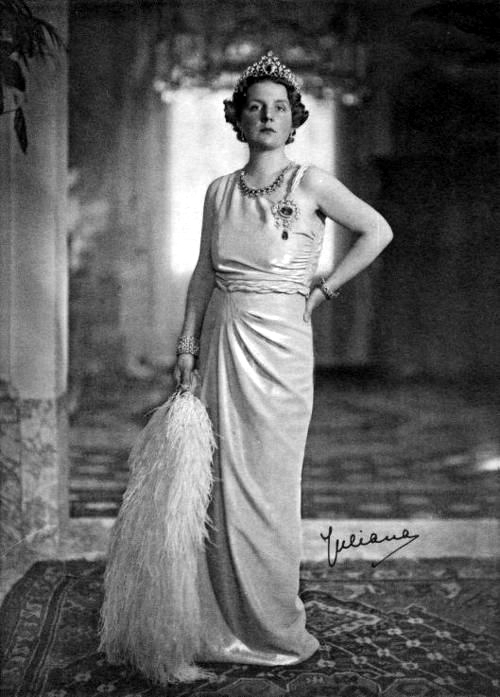
This wonderful Photograph of the Prinses was personally signed by Prinses Juliana, as can be seen on the lower right!
Two Photographs: A youthful Prinses Juliana (above) & a Family
photograph (below) of: HRH Queen Juliana 1909 - 2004; husband Prince Bernhard, Princess
Irene, Princess Magriet, Princess Christina
and Princess (later Queen) Beatrix. PS: Queen Beatrix abdicated in 2005 and her
son Crown Prince Willem Alexander became the first Dutch King in many
generations.
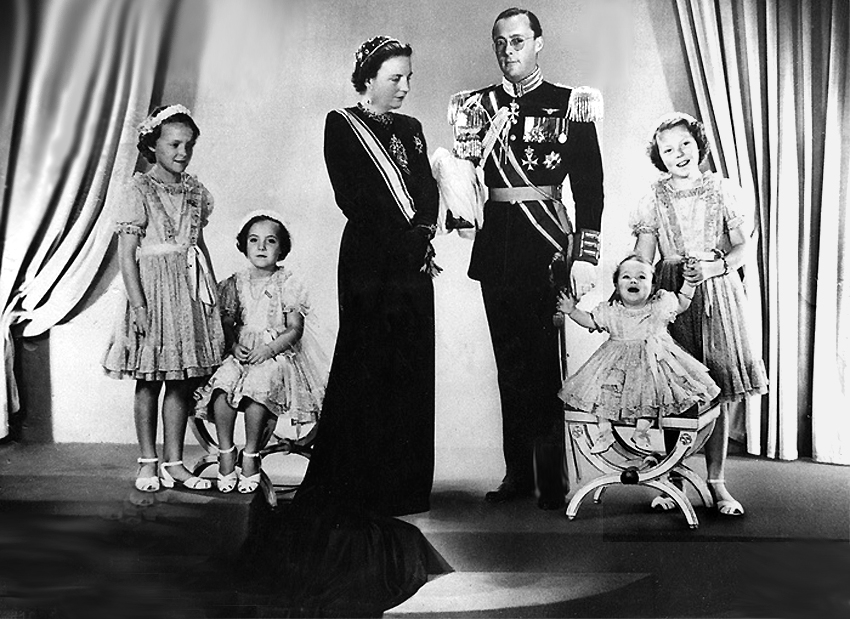
HRH Queen Juliana’s family portrait seen with husband Prince Bernhard and are seen with their four children
From left to right: Princess Irene, Princess Magriet, Princess Christina and Crown Princess Beatrix
Remembering the delightful S.S. Prinses Juliana
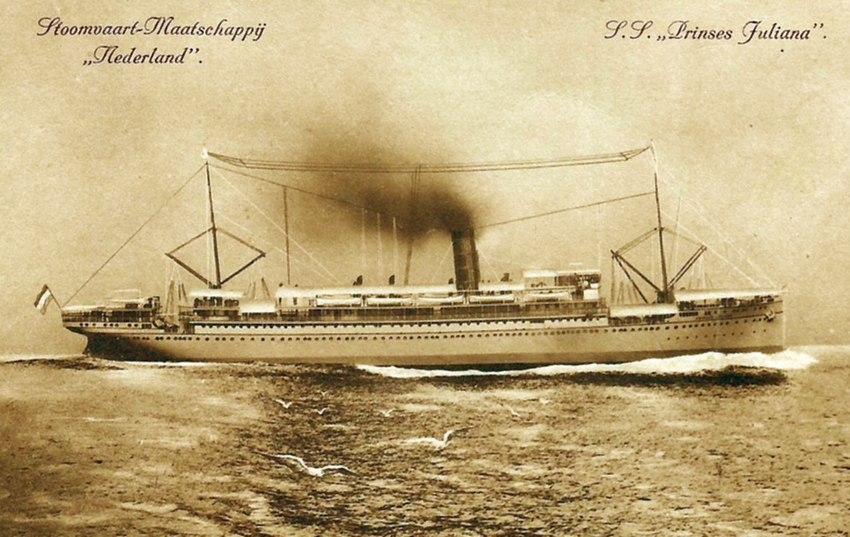
A special artist’s
impression of the SS Prinses Juliana
************************
